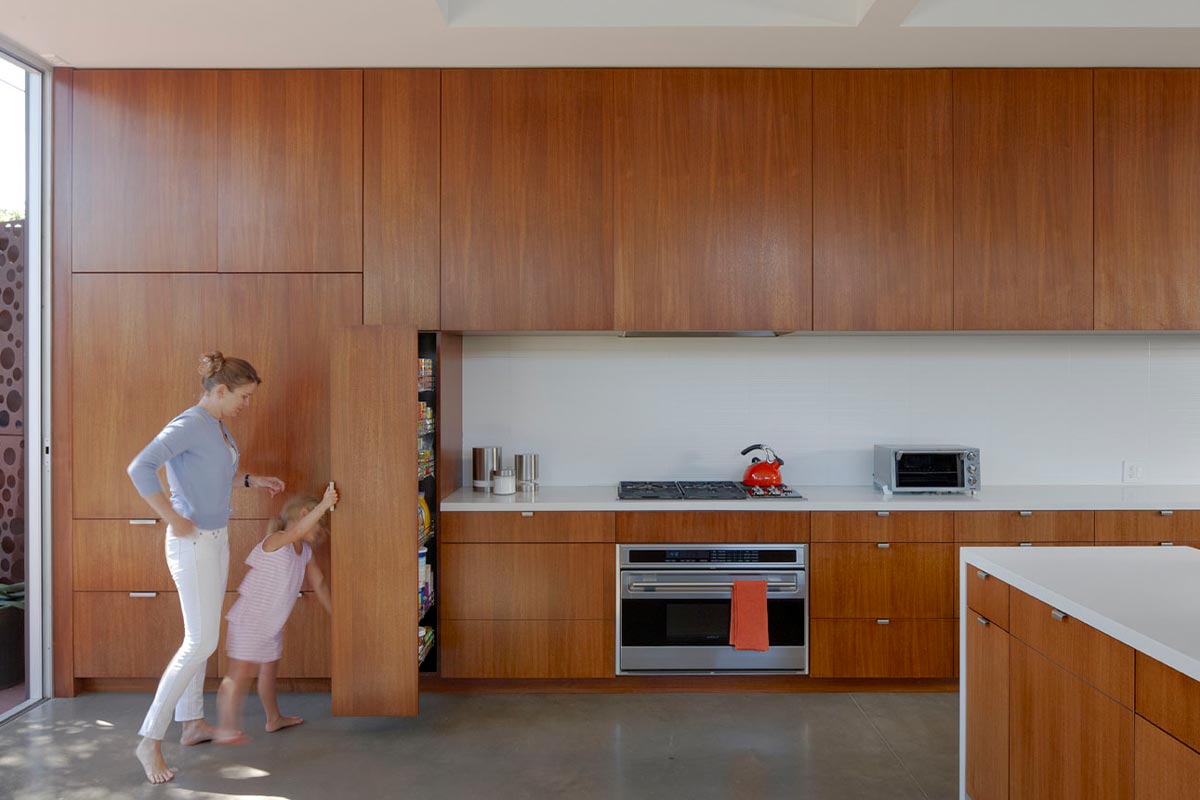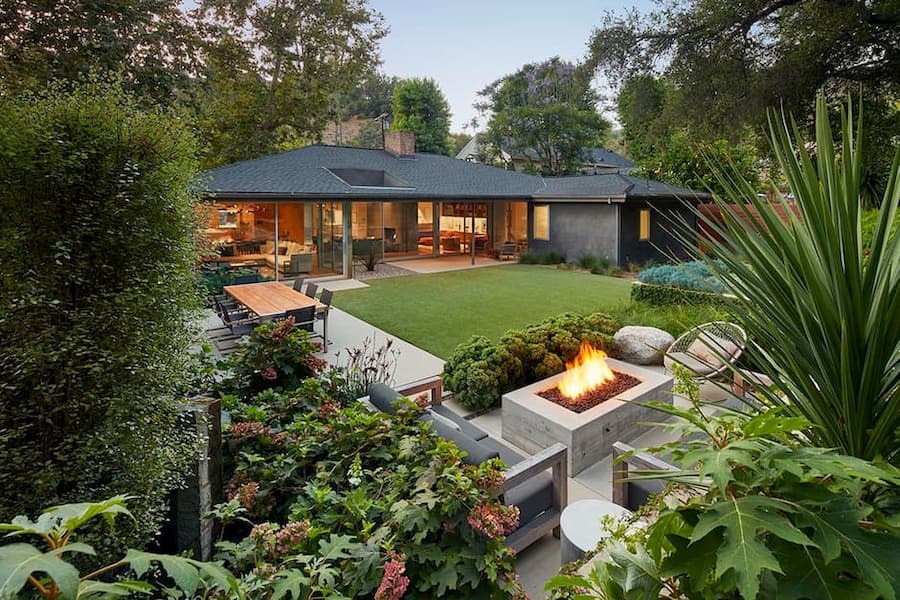Narrow Lot Houses: How to Get the Most Out of a Narrow Lot
Decades ago, many people aspiring to design and build a home from scratch wouldn’t even consider purchasing a narrow lot or plot of land to build on. After all, with so many options available, why settle for a narrow lot when you can afford something that is more conventionally oriented?
But as the price of land has continued to rise in recent years, driven by development and increased demand (especially in markets like Los Angeles, San Francisco, New York City, and other metropolitan areas), interest in narrow lots has also risen. Not only can these lots be more affordable to build on than other options; in some neighborhoods or areas, they may be the only undeveloped land left to work with.
Building on a narrow lot does, however, come with its own unique challenges and considerations. Below is a look at some methods and tactics that you can use to get the most out of your narrow lot as you design and build your home.
Ways to Make the Most Out of a Narrow Lot
1. Think carefully about planning and orientation.
When it comes to building a house on a narrow lot, one of the most obvious limitations is, of course, the size and shape of the lot itself. But by thinking critically during the planning phase, you may be surprised by how much house you can squeeze into even the narrowest of lots. Some considerations include:
- Build vertically: Building vertically will allow you to reclaim space that would otherwise go unused, and also empowers you to preserve more of your yard without sacrificing the size of your home.
- Leverage open spaces: Open floor plans are a key design feature of modern homes, and they play an especially important role in houses on narrow lots by helping the home feel larger, more open, and less confined. Especially in common areas, consider removing interior walls to create more open spaces.
- Leverage tall ceilings: Taller ceilings help your rooms feel larger than they are, for many of the same reasons that removing unnecessary interior walls works. Where possible, tall ceilings will help you feel less confined despite the orientation of the house. Gathering spaces can be especially effective places to think about building double-height rooms.
- Consider your surroundings: Houses built on narrow lots will often be situated very close to their neighboring structures. It’s important, then, to be aware of these surroundings so that the house plan can be designed in a way that maximizes privacy. Nobody wants to feel like their neighbors are looking down into their bedroom or bathroom—and with smart planning this doesn’t need to be a worry.
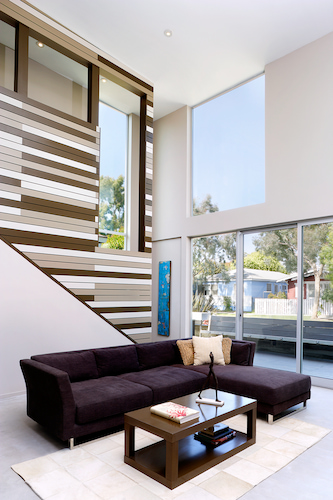
2. Use the right materials.
Your home’s material palette can also go a long way in helping the space feel larger and more open, despite being situated on a narrow lot.
For example, a large expanse of glass can help a home to feel larger than it is because it effectively opens the space up to the yard. Sliding glass doors or floor-to-ceiling windows, in place of a standard wall can both be excellent options here.
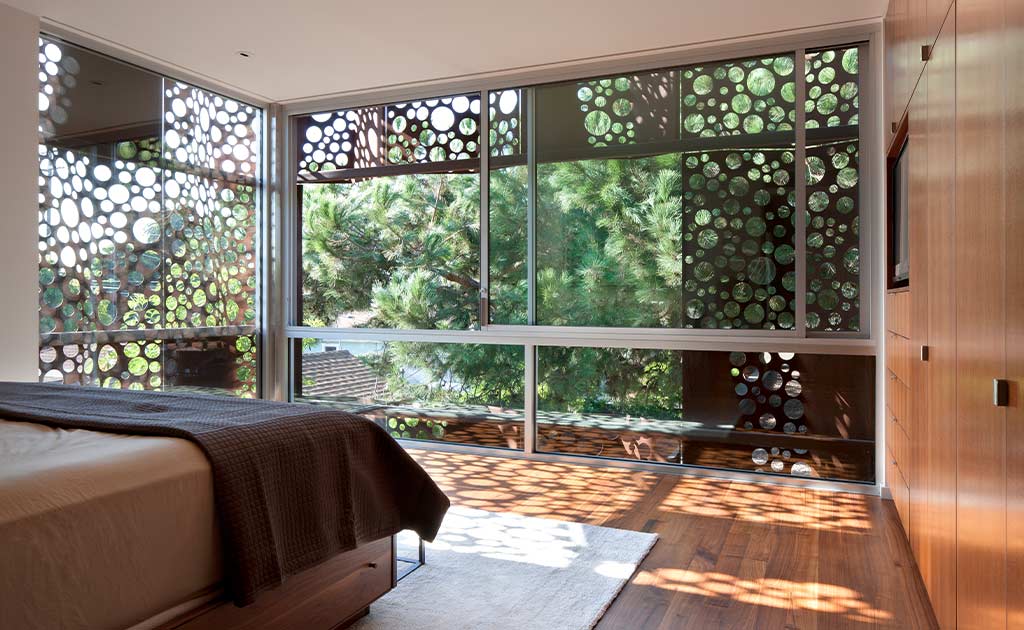
Similarly, leveraging dark materials—such as dark woods, stone, metal, or paint—can make an already narrow space feel even more confining. Meanwhile, lighter materials can help the space feel larger, especially when paired with natural light (see below).
Finally, it’s important to consider the level of detail and intricacy in the materials that you choose. A fussier material or design element can make a space feel tighter than it really is, while simpler materials and design elements can have the opposite effect.
3. Maximize the amount of natural light.
Light has the amazing ability to make a space feel larger than it really is, especially when that light comes from a natural source. Simply put, the more natural light you can allow into your home, the less constrained it will feel.
Making sure that your home’s design includes adequate windows and expanses of glass to allow the light in, as discussed above, is essential. But they are not the only option. Skylights and light wells can also be an incredibly effective means of actively pulling light deep into your home from above. These tactics work especially well in homes that are situated close to neighboring structures, which might block or otherwise “steal” natural light and prevent it from entering your home.
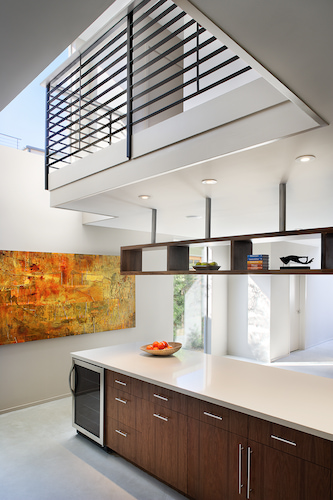
4. Don’t neglect your outdoor spaces.
Finally, it’s important to remember that your home does not only consist of your house. Outdoor spaces, such as a yard, garden, or courtyard, are also important considerations. In designing your home, it would be a mistake to overlook these areas and the simple pleasures that they bring. How you go about carving out outdoor space in your design, however, will depend on the specifics of your lot and how you envision using the space.
For example, you might find that in order to design a home that meets your needs you will be required to use up all of the buildable area on the ground floor, leaving you with little to no space for a yard or garden. In a situation like this, you might consider placing some outdoor space on the floors above ground floor—perhaps in the form of a deck off of the master bedroom, a balcony off of an upstairs lounge, or even a rooftop patio. There are many different options you can consider.
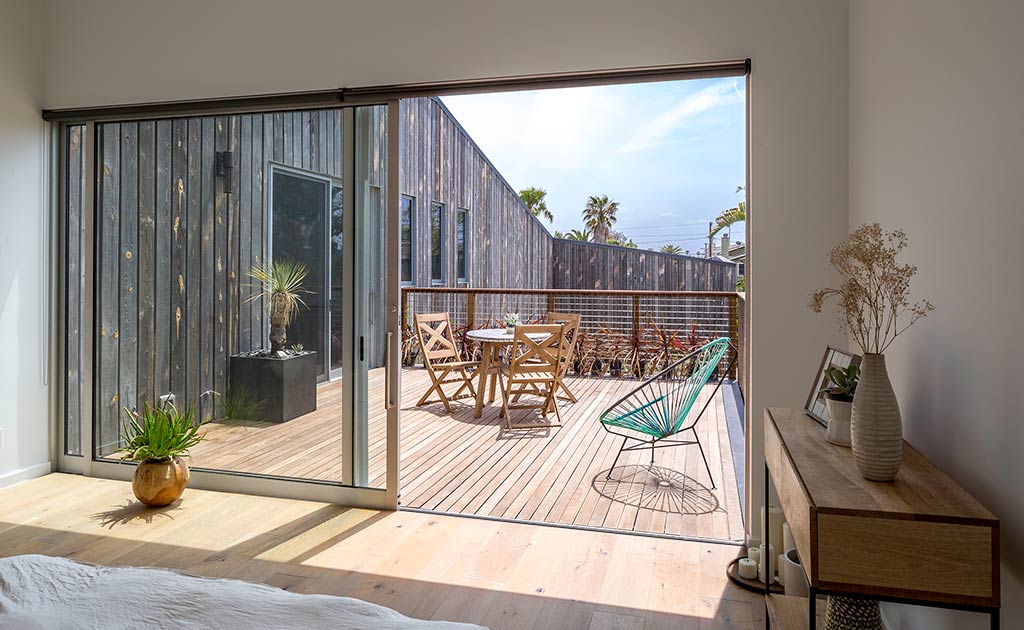
On the other hand, so long as it is feasible for your family, you might decide to preserve space for an outdoor area by shifting some of the programming into the floors above ground floor. Moving bedrooms to the second or third floor, for example, may be enough to offer a modest yard.
A Narrow Lot Doesn’t Have to Be a Limiting Factor
When many people think about building a house on a narrow lot, they believe that the lot will be a limiting factor constraining what they can or cannot do in their space. But so long as you approach your lot with an open mind, you may be surprised at just how much space you really have, and how open you can make it feel. A narrow lot doesn’t need to be a limiting factor: In fact, for many homeowners it can offer the permission and inspiration to try something new and exciting.


